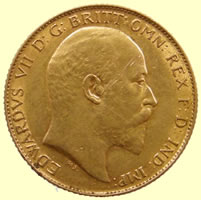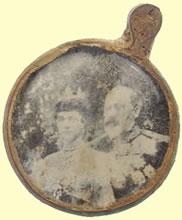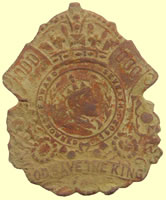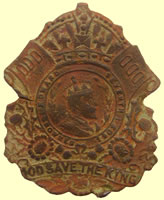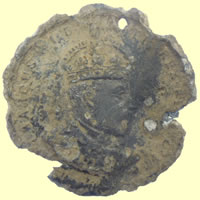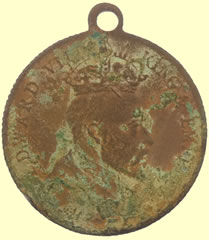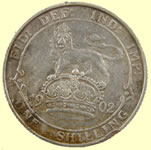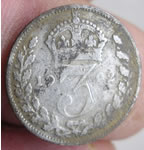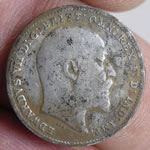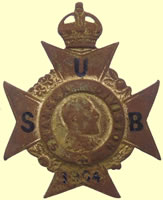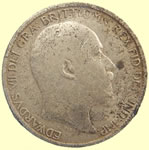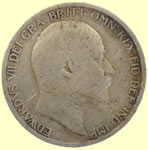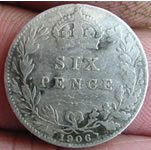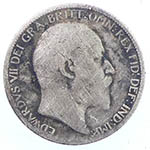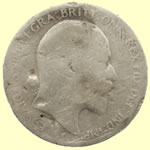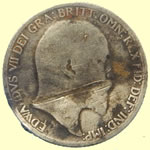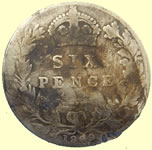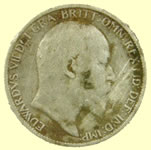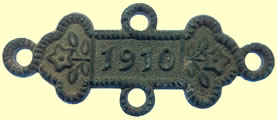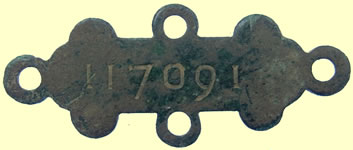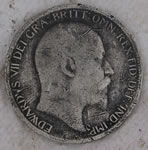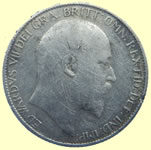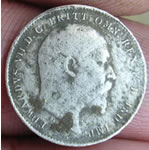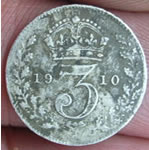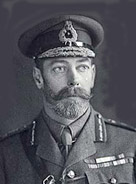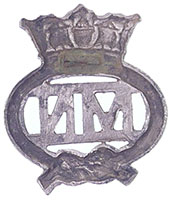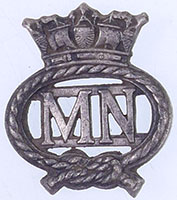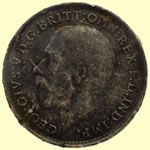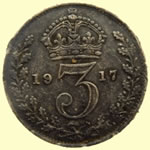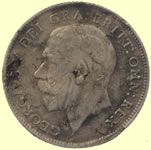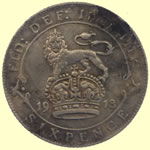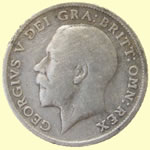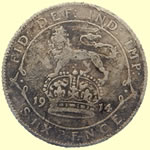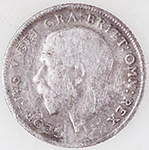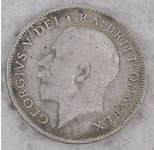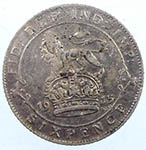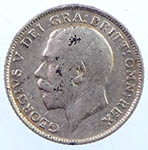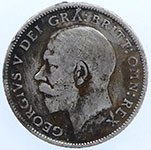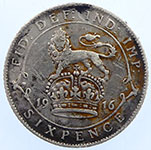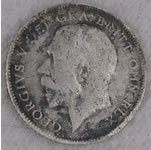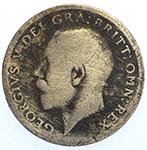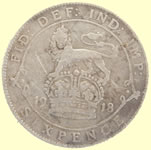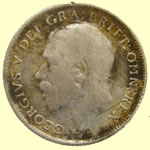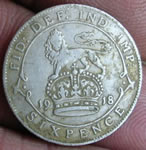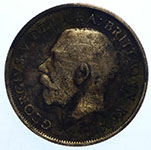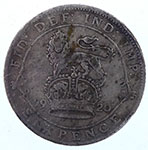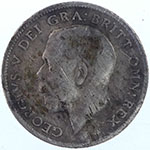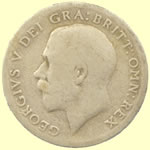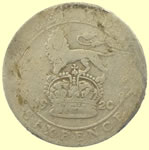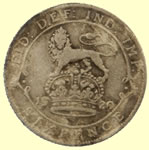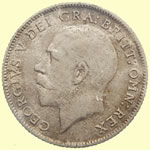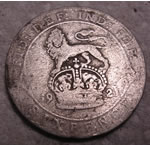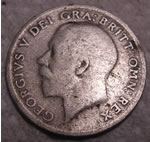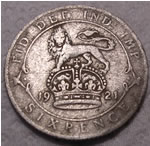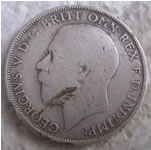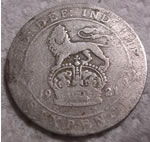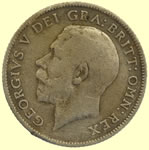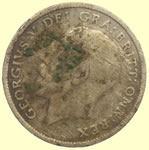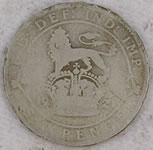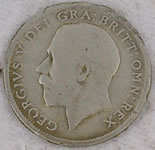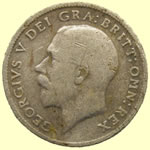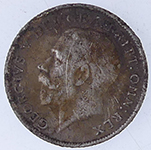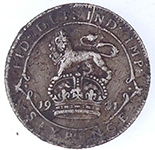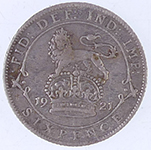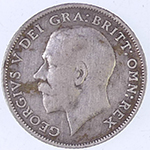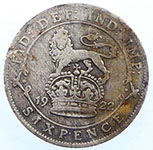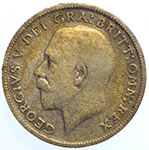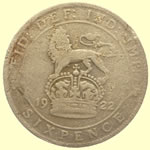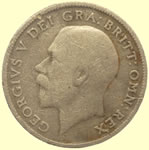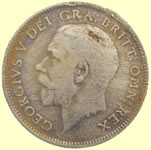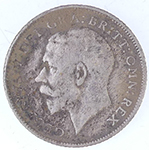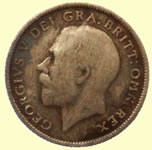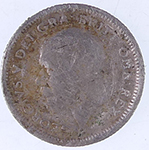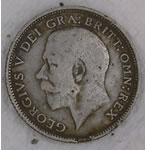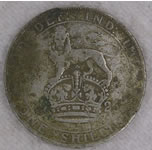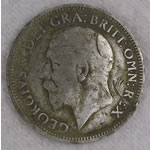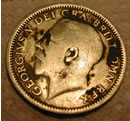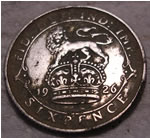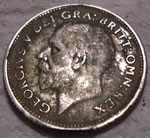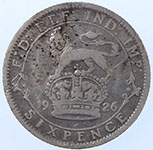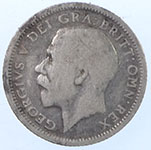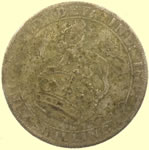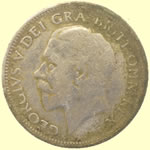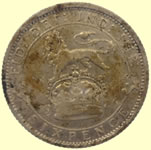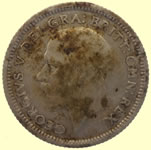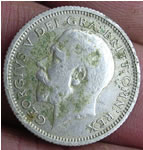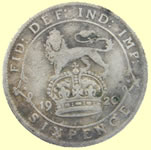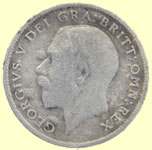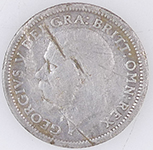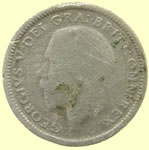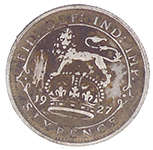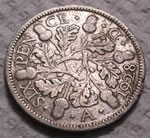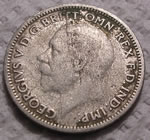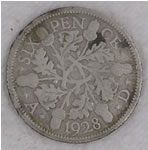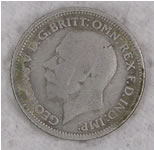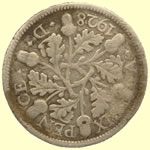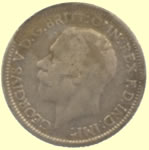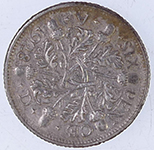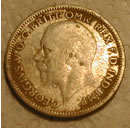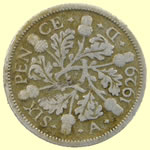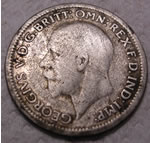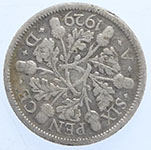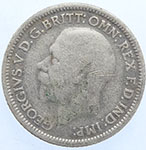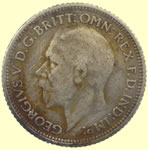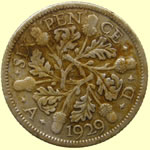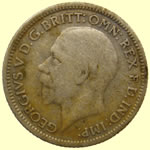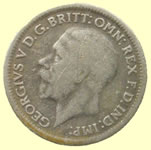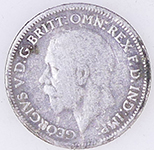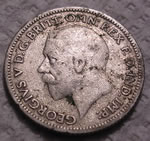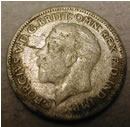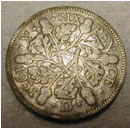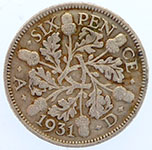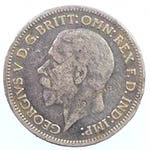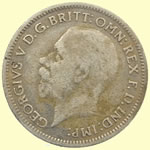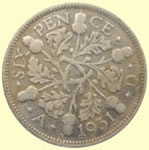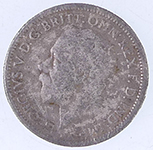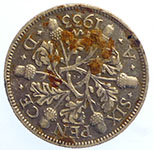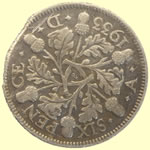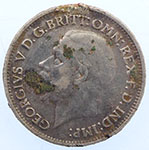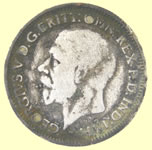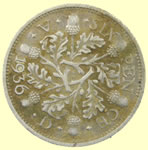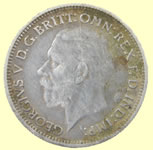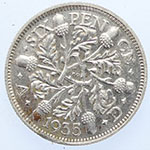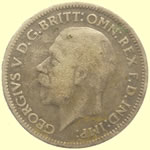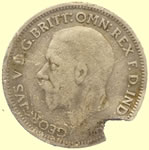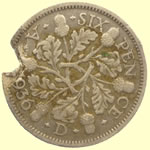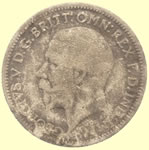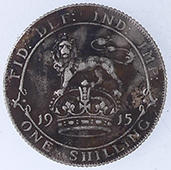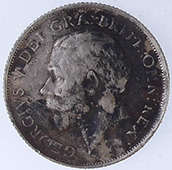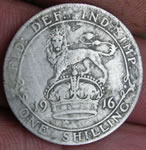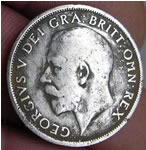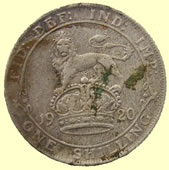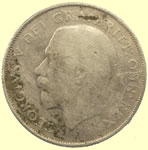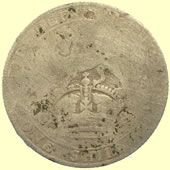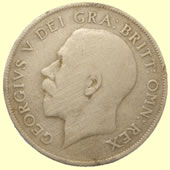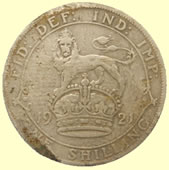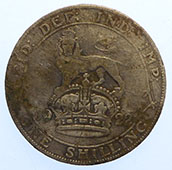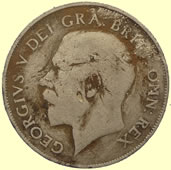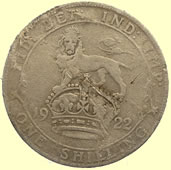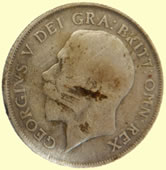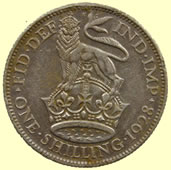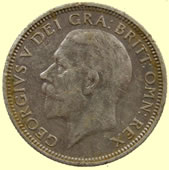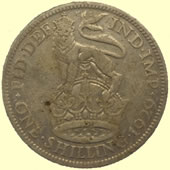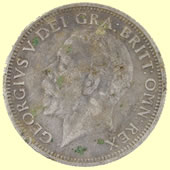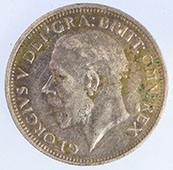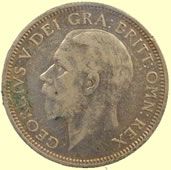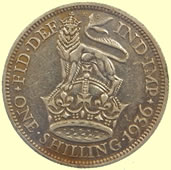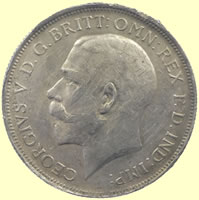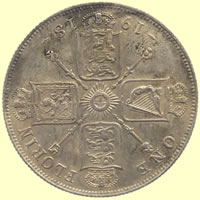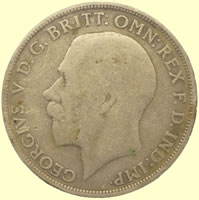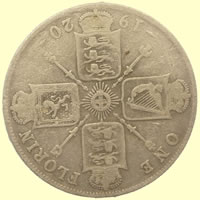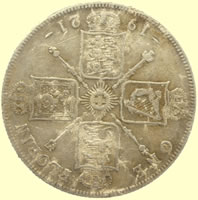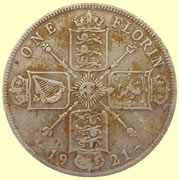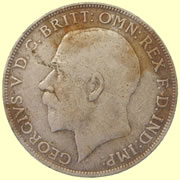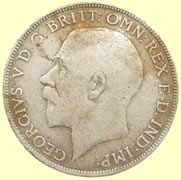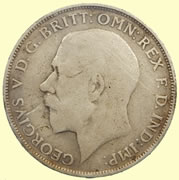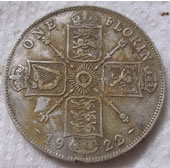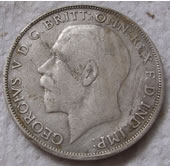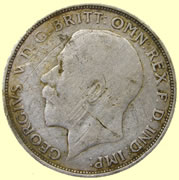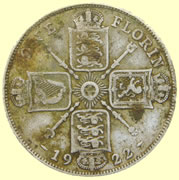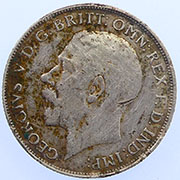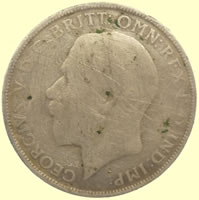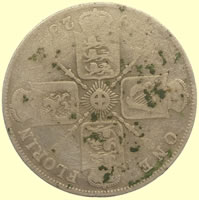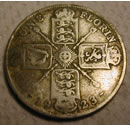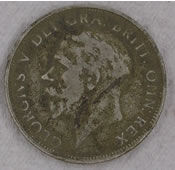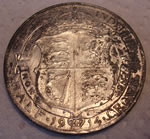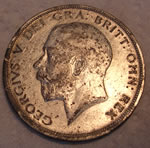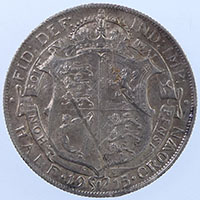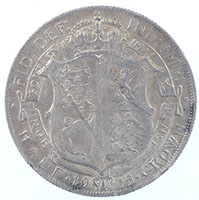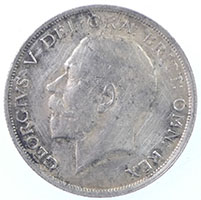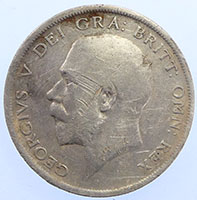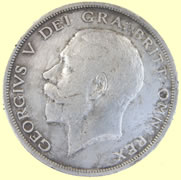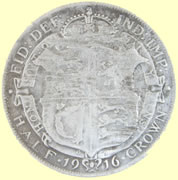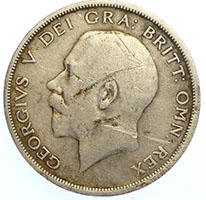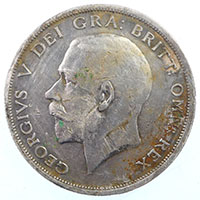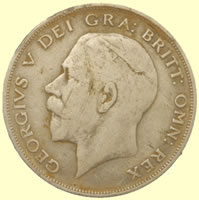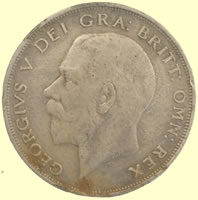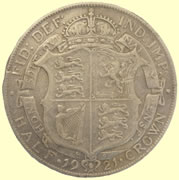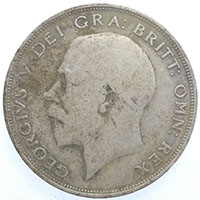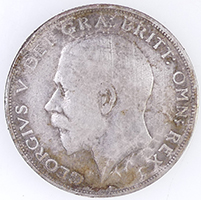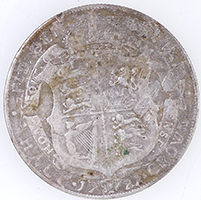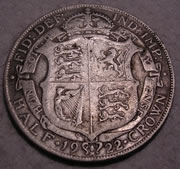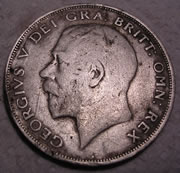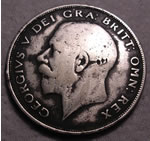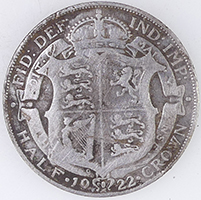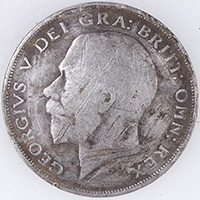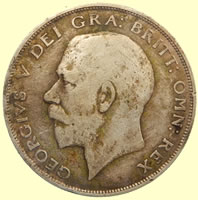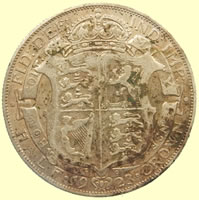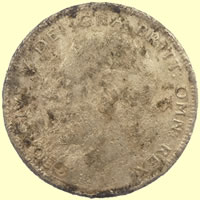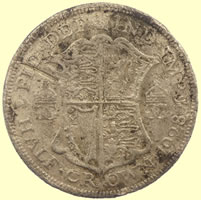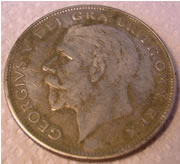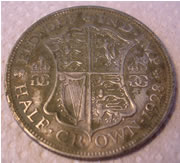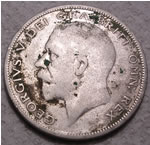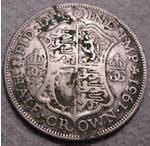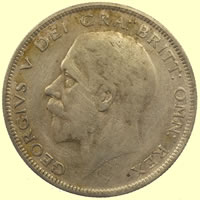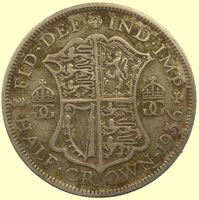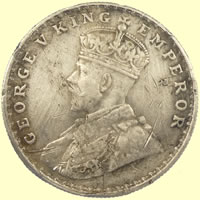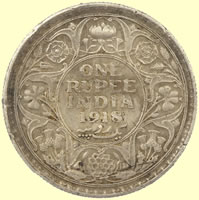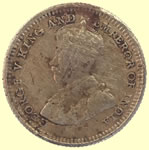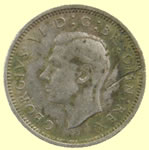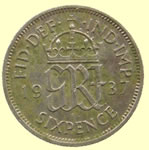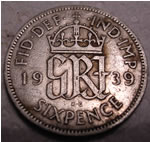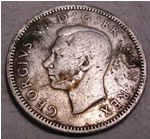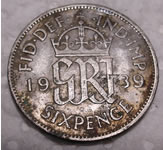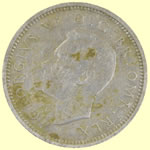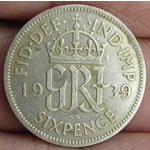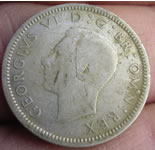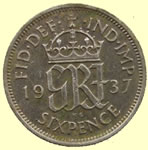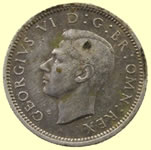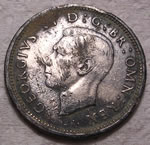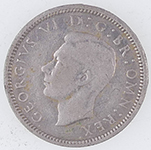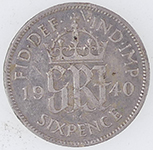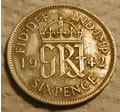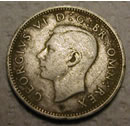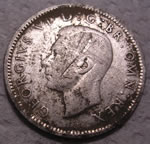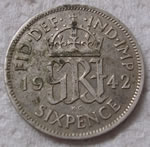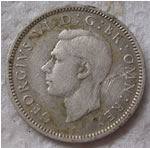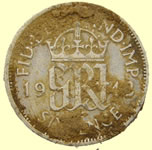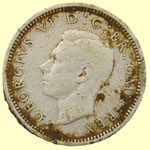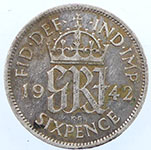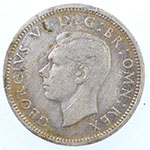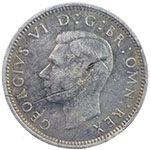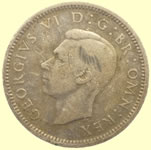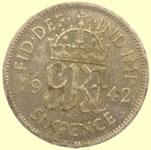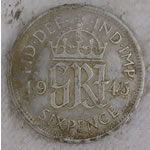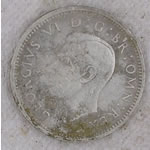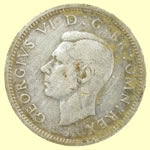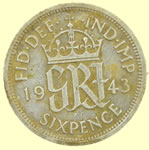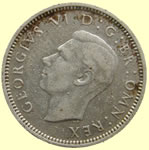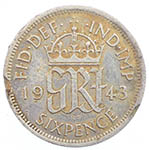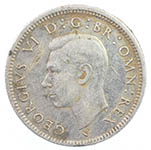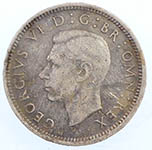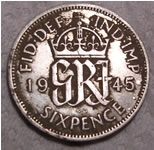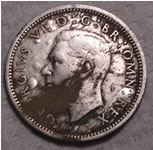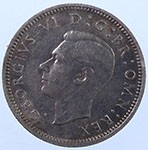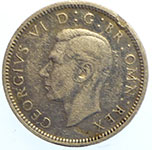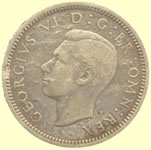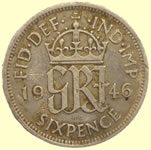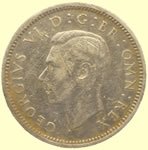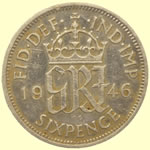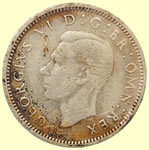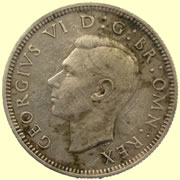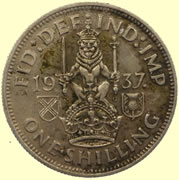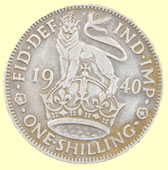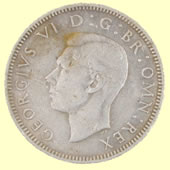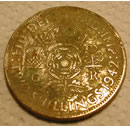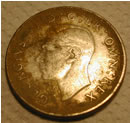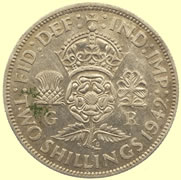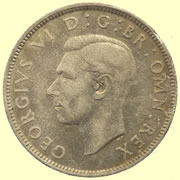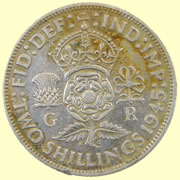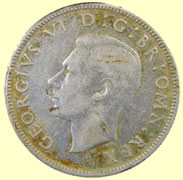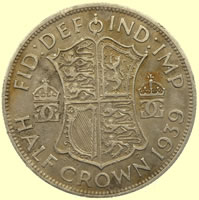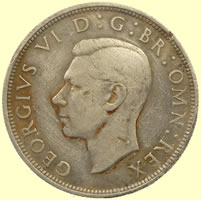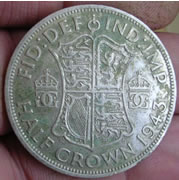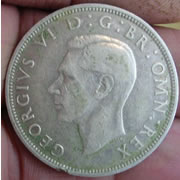

Metal detecting holidays in England with the World's most successful metal detecting club.20 years plus.
Twinned with Midwest Historical Research Society USA.
|
Edward VII 1901 - 1910
On the death of Queen Victoria in 1901 the royal house took the Germanic surname of her consort Prince Albert of Saxe-Coburg-Gotha. King Edward VII, who reigned until 1910, was to be the only sovereign of that dynasty to reign in Britain. The House of Saxe-Coburg-Gotha descended in the male line from the Wettin family, German Prince-Electors of Saxony, the earliest traceable member of the House of Wettin was Thiedericus who died in 982, who was probably based in the Liesgau. Its earliest known ancestors pushed pushing the frontier of Germany eastward into formerly Slav territory. They acquired their name from their castle on the bank of the Saale river. At the height of World War I, when German xenophobia had reached boiling point, Edward VII's son, King George V (1910- 1936) changed the family name to the more English sounding House of Windsor. Members of the House of Saxe-Coburg-Gotha occupied the thrones of other European countries, including Belgium, Portugal and Bulgaria. |
||
1909 Edward VII milled gold half sovereign |
||
1901 |
||
|
||
1902 |
||
|
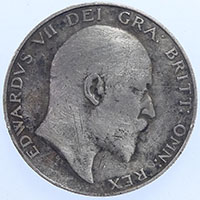  |
|
| Florin - 24 pence | Half crown - 30 pence | |
Milled silver shilling - 12 pence |
||
Milled silver sixpence |
||
Milled silver 3 pence |
||
Canada milled silver 5 cents |
||
1903 |
||
|
||
 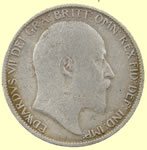 |
  |
|
| Milled silver 6 pence | Milled silver sixpence | |
  |
  |
|
| Milled silver 6 pence | Milled silver 6 pence | |
1904 |
||
Milled silver 6 pence |
||
1905 |
||
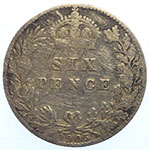  |
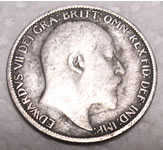  |
|
| 1905 Edward VII milled silver six pence | 1905 Edward VII milled silver six pence | |
1906 |
||
 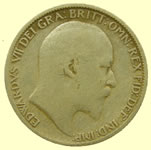   |
||
      |
||
Milled silver 6 pence |
||
1907 |
||
 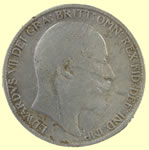    
|
||
Milled silver sixpences |
||
1908 |
||
Milled silver 6 pence
Milled silver three pence |
||
1909 |
||
Milled silver shilling - 12 pence |
||
|
||
| Milled silver 6 pence | ||
Milled silver 3 pence |
||
1910 |
||
   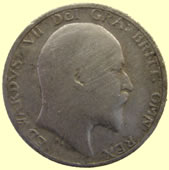 |
||
| Milled silver shilling - 12 pence | ||
Milled silver 6 pence
|
||
Milled silver 3 pence |
||
1910 |
||
Canada milled silver 5 cents and Australia 3 pence |
||
|
1910 - 1936
1910- 1936 George V's embodied diligence and duty and sought to represent his subjects, rather than define government policy as his predecessors Victoria and Edward had. George was born on 3 June 1865 in London, the second son of the Prince of Wales. When George was 18 he went into the Royal Navy, but the death of his elder brother in 1892 meant he had to leave a career he enjoyed, as he was now heir to the throne. He married his elder brother's fiancée, Princess Mary of Teck, and they had six children. In 1901 George's father became king and in May 1910, George himself became king. His reign began amid a constitutional crisis over the government's attempt to curb the power of the House of Lords. After the Liberal government obtained the king's promise to create sufficient peers to overcome Conservative opposition in the Lords (and won a second election in 1910), the Parliament Bill was passed by the Lords in 1911 without a mass creation of peers. 1911 also saw George's visit to India, the only king-emperor to make the journey. Public respect for the king increased during World War One, when he made many visits to the front line, hospitals, factories and dockyards. In 1917 anti-German feeling led him to adopt the family name of Windsor, replacing the Germanic Saxe-Coburg-Gotha. After the overthrow of the Russian Tsar in 1917, the post-war world saw the toppling of monarchies all over Europe, many of them related to the British royal family. The king's relationship with parts of the British Empire changed too. The 1916 Easter Rising in Dublin, and subsequent civil war, resulted in the setting up of the Irish Free State in 1922, which became a dominion, while the six northern counties remained part of the United Kingdom. The Statute of Westminster of 1931 meant dominion parliaments could now pass laws without reference to United Kingdom laws. This paradoxically increased the monarchy's importance, since the dominions (no longer subordinated to one supreme parliament at Westminster) were now linked through common allegiance to the crown. India gained a measure of self-governance in 1935. In 1924, George readily accepted the first Labour government. In 1931 the international economic slump caused a political crisis in Britain. The king promoted the idea of a coalition national government of Labour, Conservatives and Liberals, which was eventually formed. In 1935, the King celebrated his Silver Jubilee, an occasion of great public rejoicing. He died on 20 January 1936 and was succeeded by his son Edward.
1922 George V milled silver sixpence comparison to 1915 George V milled silver shilling (12 pence)
Merchant Navy Seaman's MN On War Service Lapel Badge British Naval King George V bestowed the title of "Merchant Navy" on the British merchant shipping fleets following their service in the First World War; a number of other nations have since adopted the title.
|
||
 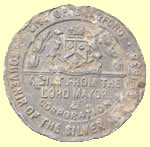 |
||
|
1910- 1935 George V silver Jubilee Medallion
|
||
Milled silver three pence |
||
1911 |
||
 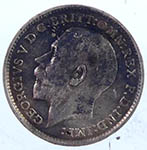 |
||
1912 |
||
 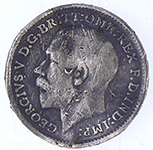 |
||
1913 |
||
1914 |
||
 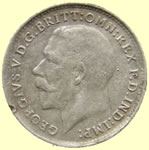   |
||
1915 |
||
1916 |
||
1917 |
||
|
||
1918 |
||
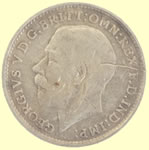  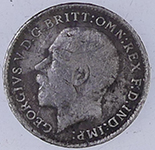 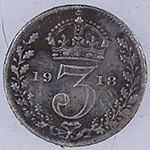 |
||
1919 |
||
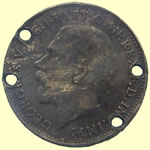      |
||
1920 |
||
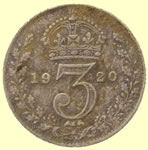 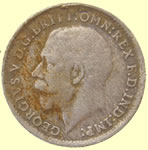 |
||
1921 |
||
 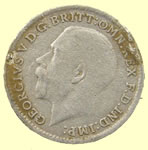   |
||
Milled silver sixpence |
||
George V silver hallmarked commemerative medal 1911 1911 |
||
|
||
1912 |
||
|
||
1913 |
||
|
||
1914 |
||
|
||
1915 |
||
|
||
1916 |
||
|
||
1917 |
||
  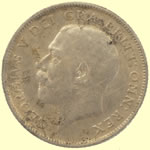  |
||
1918 |
||
|
||
1919 |
||
|
||
1920 |
||
|
||
1921 |
||
|
||
1922 |
||
|
||
1923 |
||
|
||
1924 |
||
|
||
1925 |
||
|
||
1926 |
||
|
||
1927 |
||
|
||
1928 |
||
|
||
1929 |
||
|
||
1930 |
||
|
||
1931 |
||
|
||
1932 |
||
|
||
1933 |
||
|
||
1934 |
||
|
||
1935 |
||
|
||
1936 |
||
|
||
Shilling (12 pence)
|
||
1912 |
||
  |
||
1913 |
||
1914 |
||
1915 |
||
|
||
1916 |
||
|
||
1917 |
||
|
||
1920 |
||
|
||
1921 |
||
|
||
1922 |
||
|
||
1923 |
||
 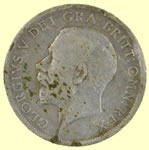 |
||
1924 |
||
1925 |
||
  |
||
1926 |
||
  |
||
1927 |
||
|
||
1928 |
||
|
||
1929 |
||
|
||
1930 |
||
1931 |
||
 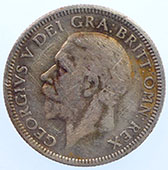  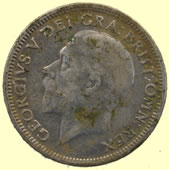 |
||
1932 |
||
  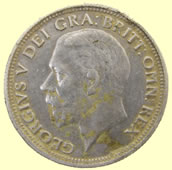 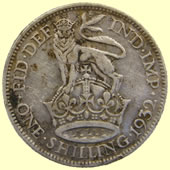 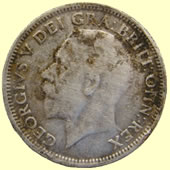 |
||
1933 |
||
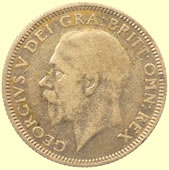  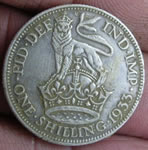 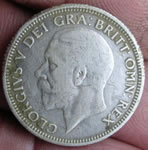 |
||
1934 |
||
1935 |
||
|
||
1936 |
||
|
||
Florin (24 pence)
|
||
1912 |
||
 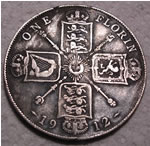 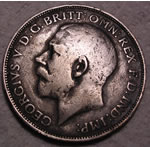  |
||
1913 |
||
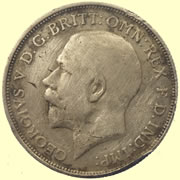  |
||
1914 |
||
  |
||
1915 |
||
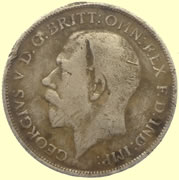  |
||
1916 |
||
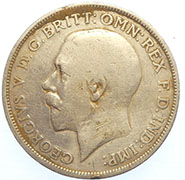  |
||
1917 |
||
1918 |
||
|
||
1919 |
||
  |
||
1920 |
||
|
||
1921 |
||
|
||
1922 |
||
|
||
1923 |
||
|
||
1924 |
||
1925 |
||
1926 |
||
 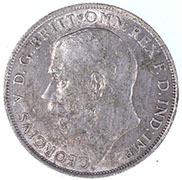 |
||
1927 |
||
1928 |
||
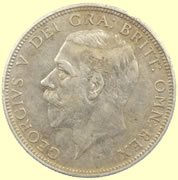    |
||
1929 |
||
|
||
1930 |
||
|
||
1931 |
||
    |
||
1932 |
||
1933 |
||
 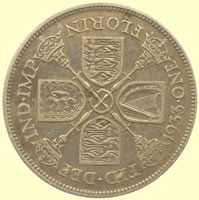 |
||
1934 |
||
1935 |
||
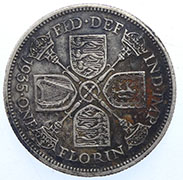 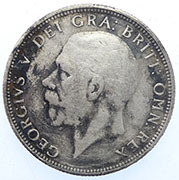 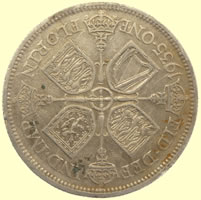 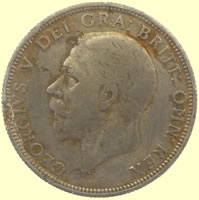 |
||
1936 |
||
|
||
Halfcrown (30 pence) |
||
1914 |
||
|
||
1915 |
||
|
||
1916 |
||
|
||
1917 |
||
  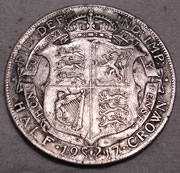  |
||
1918 |
||
1919 |
||
1920 |
||
|
||
1921 |
||
|
||
1922 |
||
|
||
1923 |
||
|
||
1924 |
||
1925 |
||
1926 |
||
  |
||
1927 |
||
1928 |
||
|
||
1929 |
||
|
||
1930 |
||
1931 |
||
|
||
1932 |
||
  |
||
1933 |
||
|
||
1934 |
||
1935 |
||
    |
||
1936 |
||
|
||
|
||
Foreign George V milled silver coins |
||
|
Edward VIII 1936 |
||
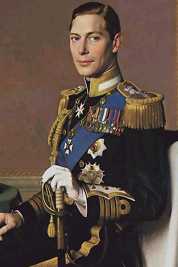
George VI 1936 - 1952 Second son of George V he was named Albert after his great grandfather Prince Albert. As The Duke of York he had never expected or wished to succeed to the throne. He was naturally diffident and anxious, and suffered from a speech impediment. But he never lacked bravery or enterprise, and had a strong sense of Duty. He had fought as a young naval officer at the Battle of Jutland in World War I, and was the first member of the Royal Family to learn to fly. In 1923 he married Elizabeth Bowes-Lyon. They had two daughters Elizabeth, know as ‘Lilibet’ who later became Queen Elizabeth II, and Margaret Rose ‘Princess Margaret’. He became King George VI in December 1936 following the death of his father George V and the abdication of his brother. Fortified by the influence of his Queen, who swiftly acquired immense popularity in her own right, George VI coped with the aftermath of the abdication in a way that quickly restored confidence in the monarchy. |
||
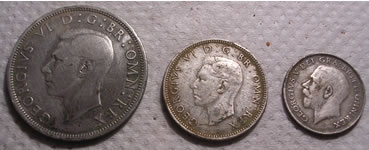 |
||
Size comparison1940 Half Crown ( 30 Pence) 1942 shilling (12 pence) 1921 sixpence |
||
Milled silver 3 pences |
||
1940 |
||
 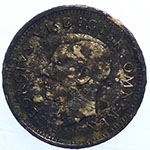 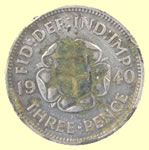 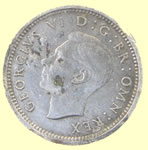 |
||
1941 |
||
    |
||
Milled silver sixpence |
||
1937 |
||
|
||
1938 |
||
|
||
1939 |
||
|
||
1940 |
||
|
||
1941 |
||
|
||
1942 |
||
|
||
1943 |
||
|
||
1944 |
||
|
||
1945 |
||
|
||
1946 |
||
|
||
1947 |
||
Post 1947 coins are cupro nickle |
||
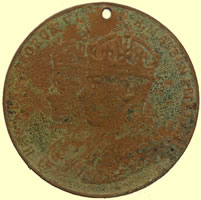  |
||
Shillings (12 pence) |
||
1937 |
||
|
||
1938 |
||
 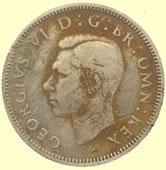     |
||
1939 |
||
  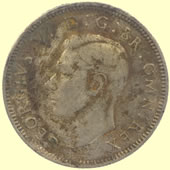    |
||
1940 |
||
|
||
1941 |
||
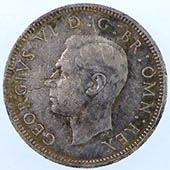    |
||
1942 |
||
|
||
1943 |
||
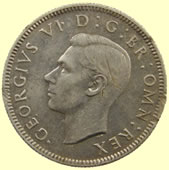    |
||
1944 |
||
 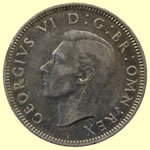 |
||
1945 |
||
1946 |
||
 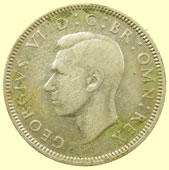 |
||
1945 |
||
 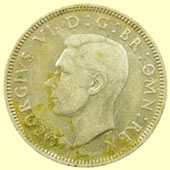 |
||
1947 |
||
  |
||
Post 1947 coins are cupro nickle
|
||
Florins (24 pence) |
||
1937 |
||
|
||
1939 |
||
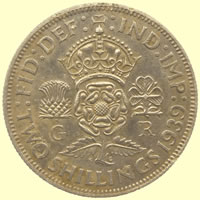 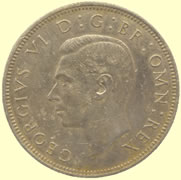 |
||
1940 |
||
|
||
1942 |
||
|
||
1943 |
||
    |
||
1944 |
||
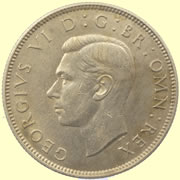  |
||
1945 |
||
|
||
1946 |
||
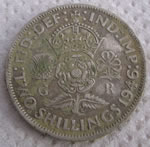  |
||
Half crowns (30 pence)
|
||
1939 |
||
|
||
1940 |
||
|
||
1942 |
||
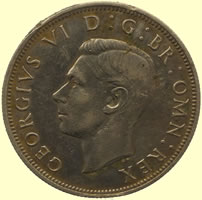    |
||
1943 |
||
|
||
1944 |
||
1945 |
||
|
||
1946 |
||
  |
||
Colonial issue |
||
  |
||
 |
||


